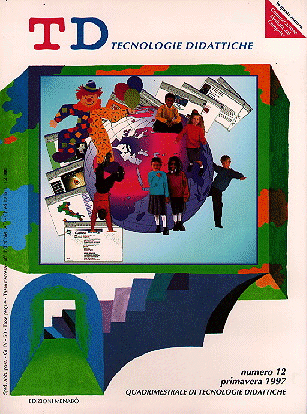A study explores cooperative learning at a distance
Main Article Content
Abstract
Article Details
Authors who publish with this journal agree to the following terms:
- Authors retain copyright and grant the journal right of first publication with the work simultaneously licensed under a Creative Commons CC BY 4.0 Attribution 4.0 International License.
- Authors are able to enter into separate, additional contractual arrangements for the non-exclusive distribution of the journal's published version of the work (e.g., post it to an institutional repository or publish it in a book), with an acknowledgement of its initial publication in this journal.
- Authors are permitted and encouraged to post their work online (e.g., in institutional repositories or on their website) prior to and during the submission process, as it can lead to productive exchanges, as well as earlier and greater citation of published work (See The Effect of Open Access)
References
Bos E.S., Kikstra A., & Morgan C.M. (1996). Multiple Levels of Use of the web as a Learning Tool, in Proceedings of ED-TELECOM 96, Boston, Mass., June 17-22, 1996, AACE, 31-36.
Brown A.L., & Campione J.C. (1990). Communities of learning or a context by any other name, in D. Kuhn (ed), Contributions to Human Development, vol. 21, 108-126.
Collins A., Seely Brown J., & Newman S.E. (1989). Cognitive apprenticeship: Teaching the crafts of reading, writing, and mathematics, in L.B. Resnick (ed), Knowing, Learning, and Instruction. Essays in honor of Robert Glaser, Hillsdale, NJ: Erlbaum.
Duffy T.M., & Jonassen D.H. (1992). Constructivism and the Technology of Instruction. A Conversation . Hillsdale, NJ: Erlbaum.
Forman, E.A., Minick, N., & Stone, C.A. (Eds). (1993). Contexts for Learning: Sociocultural Dynamics in Children’s Development. New York: Oxford University Press.
Halliday, M.A.K. (1978). The social interpretation of language and meaning. London, UK: University Park Press.
Lin, Bransford, et al. (1995). Instructional design and development of learning communities: An invitation to a dialogue, Educational technology, vol. 35(5), 53-63.
Riel M.M., & Levin J.A. (1990). Building electronic communities: Successes and failures in computer networking, Instructional Sciences, vol. 19, 145-169.
Rocco E., & Warglien M. (1995). La comunicazione mediata da computer e l’emergere dell’opportunismo elettronico, Sistemi Intelligenti, vol. 7(3), 393-420.
Rossman P. (1992). The emerging Worldwide Electronic University. Information age, global higher education, Westport, Greenwood Press.
Scardamalia M., Bereiter C., Lamon M. (1994). The CSILE Project: Trying to bring the classroom into world3, in K. McGilly (ed), Learning Lessons, Boston, MA: M.I.T. Press.
Steffe L.S., & Gale J. (1995). Constructivism in Education, Hillsdale, NJ: Erlbaum.
Wild R.H., & Winniford M.A. (1993). Remote collaboration among students using electronic mail, in Computer Education, vol. 21(3), 193-203.

